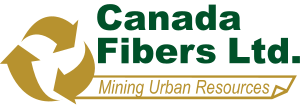
In a recent episode of On Point Radio, leaders from Canada’s waste and recycling industry joined the conversation to explore a pressing issue that’s often misunderstood: Blue Box contamination. Representing one of the country’s most advanced recycling operators, Canada Fibers Ltd. offered real insights on the systemic challenges this problem creates—and how smart sorting and education can solve it.
The interview emphasized how contamination directly impacts municipal costs, recycling effectiveness, and long-term sustainability.
What Is Blue Box Contamination?
Blue Box contamination happens when non-recyclable materials are placed in curbside bins alongside legitimate recyclables. This can include:
- Food-soiled containers
- Plastic bags
- Mixed-material packaging
- Coffee cups, textiles, electronics
According to the Government of Ontario, contamination rates in some regions can exceed 30%, rendering otherwise valuable materials unrecoverable and increasing operating costs at facilities like the MRF Complex.
https://globalnews.ca/news/5104582/toronto-recycling-blue-bin-contamination
Key Interview Takeaways
- Wishcycling Hurts Everyone
Many residents believe “if in doubt, throw it in the bin”—but this wishcycling causes entire batches to be rejected, disrupting efficient sorting and raising disposal fees. - Infrastructure Is Only Half the Battle
Facilities like Urban Mining and Urban Polymers use advanced technology to separate materials, but they still rely on clean inputs. Education and behavior change are equally critical. - Standardization Is the Future
Canada Fibers emphasized the need for province-wide recycling standards, improved public-facing communication, and partnerships between municipalities and operators to make programs more effective.
Canada Fibers’ Approach to Contamination
Canada Fibers’ integrated model allows it to adapt to contamination challenges through both technology and outreach:
- Optical sorters and robotics at the MRF Complex improve efficiency
- Public Services teams support municipalities with education campaigns
- Divisions like Urban Biofuels and Urban Garden Products help repurpose waste into renewable resources
Educational Tools That Work
Check out this clear explainer video on the real impact of contamination:
🎬 Wishcycling Explained: How You’re Breaking the Recycling System
It pairs perfectly with Canada Fibers’ mission to demystify the recycling process and make it more accessible to the public.
Why This Conversation Matters
Blue Box contamination isn’t just an inconvenience—it’s a critical challenge for Canada’s evolving recycling infrastructure. By raising awareness on platforms like On Point Radio, Canada Fibers plays a vital role in pushing the conversation forward and helping residents, businesses, and cities recycle more effectively.
To learn how we help municipalities and private clients build stronger systems, explore our Business Services and Public Services pages—or dive into our Company History to see how we became a leader in sustainable recovery.
